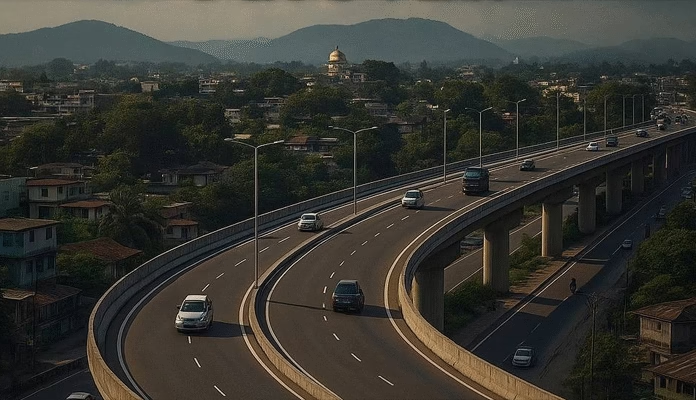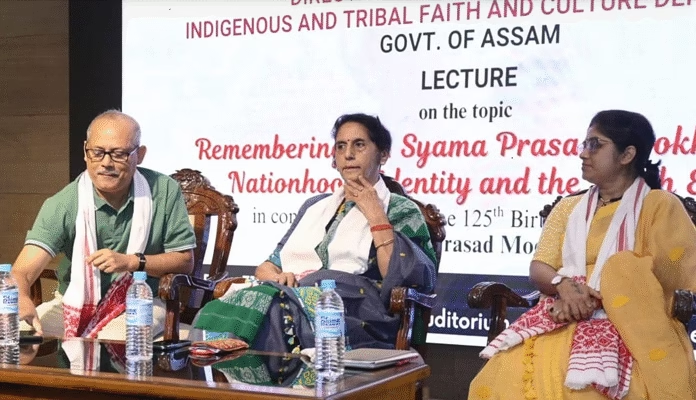
 by Nava Thakuria
by Nava Thakuria
The natural gas leakage from Bhatiapar crude oil well continues for 15 days, even though the Oil and Natural Gas Corporation (ONGC) along with an expert team from USA continue working for full dousing of the RDS-147A under Rudrasagar oilfield in Sivasagar district of eastern Assam. The blowout began on 12 June 2025 and uncontrolled leakage compelled nearly 350 families to leave their places for safety reasons. Besides the local villagers living near the old well, the high pressure gas flow impacted the surrounding environment heavily. Lately, the ONGC issued a statement claiming that ‘a significant progress in controlling the well at RDS 147A’ was made. It also added the gas was nontoxic and the volume got reduced posing no extra risk to the villagers living beyond 500 meter radius away.
Lately, the State pollution authority issued a show-cause notice to the ONGC for the activities without securing necessary environmental clearances. Pollution Control Board, Assam (PCBA) in a notice, issued on 21 June, accused the largest crude oil & natural gas exploration and drilling company in India of operating at well number 147 (Bhatiapar–Barichuk area) without securing the mandatory consent to establish (CTE) and consent to operate (CTO) under a number of environmental legislations. The PCBA gave the ONGC authority two weeks to explain why action should not be taken against it. If failed to respond within the stipulated period, the PCBA (under the guidelines of National Green Tribunal) may impose environmental compensation fines (ECF) and other penalties against the ONGC.
Speaking to this writer, PCBA chairman Er Arup Kr Mishra informed that the responsible board officials had confirmed the uncontrolled gas flow from RDS-147A causing pollution to the local environment. The visiting scientists from the PCBA’s central laboratory and RLO- Sivasagar to the location detected that the ONGC authority had neither taken CTE/CTO for the RDS-147A work over drill site nor even intimated the board, stated Mishra, adding that the ONGC Limited, Assam Asset was intimated with various provisions under the Air (Prevention & Control of Pollution) Act 1981, the Water (Prevention & Control of Pollution) Act 1974, the Hazardous and Other Wastes (Management and Transboundary Movement) Rules 2016, and the Environment (Protection) Act 1986, which were violated while operating a ‘Work Over Drill Site RD147-A’.
Many villagers are worried about the incident, remembering the Baghjan catastrophic gas and oil leak which caught fire subsequently. Well number 5 of the Oil India Limited experienced the gas discharge on 27 May 2020 and it caught fire on 9 June to make the accident one of the worst industrial disasters in India. The gas flow and fire was completely doused on 15 November with the help of an expert team from Canada. The disaster claimed three human lives, sudden evacuation of over 9000 families (and subsequent loss of properties and livelihoods) as well as damaged thousands of hectares of areas belonging to Maguri-Motapung wetland and Dibru-Saikhowa National Park etc.
The destroyed ecosystem will probably need decades to regain its original form. But one can remember, a Guwahati-based journalist (now a popular talk-show host) wrote in a prime English daily newspaper soon after the disaster asserting that the nature in Baghjan had already returned back to its original shape. He also criticized the affected villagers for mishandling the compensation from the OIL authority. No wonder, a public demonstration was organized by local villagers terming the journalist a tout of the oil company for personal gains. It was another kind of disaster for the Asomiya society after the Baghjan tragedy indeed!
Nonetheless, it’s time for India to have an efficient response team to deal with disasters of such magnitudes and avoid national embarrassment in the coming days.



